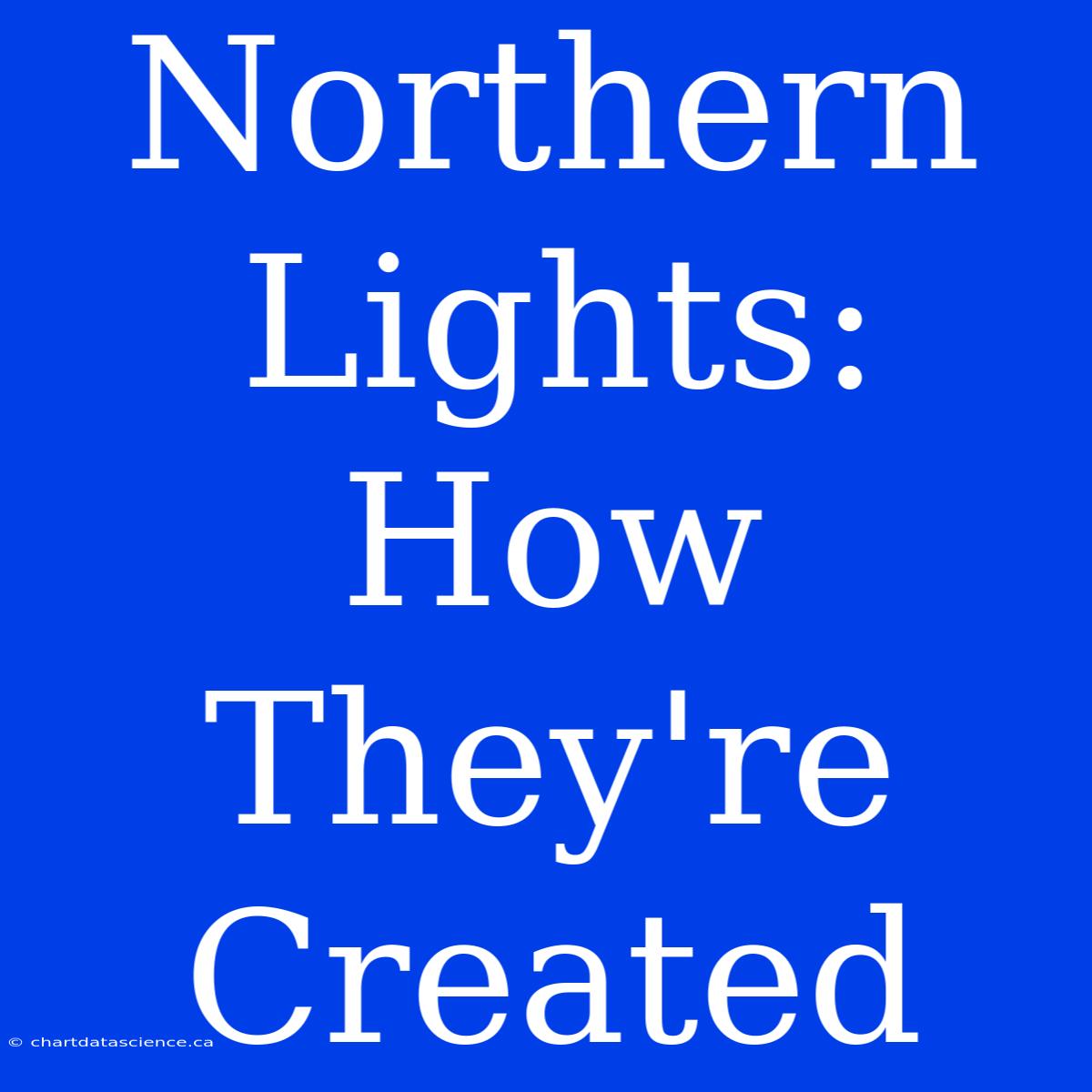Northern Lights: How They're Created
Have you ever gazed up at the night sky and seen swirling, dancing curtains of vibrant green, red, blue, or even purple light? That's the aurora borealis, also known as the Northern Lights, a truly mesmerizing spectacle of nature. But how do these dazzling displays come to life?
A Cosmic Ballet: The Science Behind the Northern Lights
The Northern Lights are a fascinating example of how space weather interacts with our planet's atmosphere. They happen when charged particles from the sun, known as solar wind, collide with atoms and molecules in Earth's atmosphere.
Here's the breakdown:
- Solar Flares and Coronal Mass Ejections: The sun, our nearest star, is constantly releasing bursts of energy called solar flares and coronal mass ejections (CMEs). These events unleash massive amounts of charged particles, like protons and electrons.
- Earth's Magnetic Field: Our planet acts like a giant magnet, with a magnetic field that surrounds it. This magnetic field deflects most of the solar wind, protecting us from its harmful radiation.
- The Dance Begins: Some charged particles from the sun sneak past Earth's magnetic field, especially near the poles where the field is weaker. These particles then race towards Earth's atmosphere, where they collide with atoms and molecules.
- Energy Release and Light: When these charged particles collide with atoms and molecules in the atmosphere, they excite them. These excited atoms and molecules release energy in the form of light, creating the beautiful aurora. The color of the aurora depends on the type of atom and molecule involved and the energy level of the collision.
Why Do We See Them Mostly in the North?
The aurora is most commonly seen near the Earth's magnetic poles – the North and South poles. The reason for this is because the magnetic field lines converge at the poles, funneling the charged particles towards these areas.
Witnessing the Northern Lights: A Bucket List Experience
Seeing the aurora borealis is a truly unforgettable experience. Many people travel to high-latitude regions like Alaska, Canada, Norway, Iceland, Greenland, and Siberia to witness this natural wonder.
The best time to see the aurora is usually during winter, when the nights are long and dark. Remember, the aurora is a natural phenomenon, so there's no guarantee of a perfect show every night.
Pro Tip: For the best chance to see the Northern Lights, try visiting during a period of high solar activity. You can check for solar flares and CMEs using websites like the Space Weather Prediction Center.
So, the next time you find yourself under a starry sky, remember the cosmic ballet that creates the Northern Lights – a reminder of the dynamic interplay between the sun, Earth, and our atmosphere.

